Space qualified Tessellating TeraHertz RAMs
for the 50 to 1000 GHz Region and beyond.
Radar Absorbing material developed especially for the Terahertz and MM regions using injection moulded square formed in conducting plastic. Very sharp pyramidal surface gives very low reflection. Features include:
- Polypropylene based
- Tessalating squares clip together using integral pin and socket joints
- Arbitrary surfaces can be built up.
- Space qualified - details here
- Suitable for Cryogenic operation
- Will work in vacuum
- Very low monstatic scattering reflection
- Low specular reflection.
- Item sold by institutional licence plus low piece part charge.
Two versions are available - a small tile, 25mm sqaure with good operation down to 100 GHz, and a larger tile 100mm square, operating to below 50 GHz
Small Tiles
The individual pieces look like:
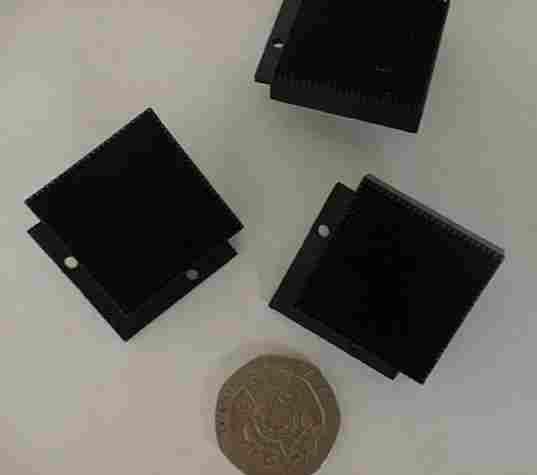
with the following mechanical form
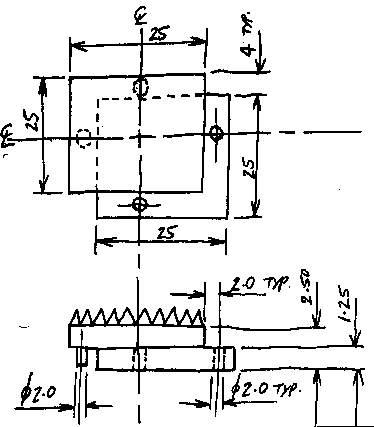
Matra-Marconi Space Ltd has space qualified the material
We have collected a range of measurements on the RAM.
A detailed study of a range of RAM materials has been performed by Prof Annti Raisanen and Jussi Saily at the Radio Laboratory, Helsinki University of Technology.
This plot shows spectular reflection at 200 GHz. The TK RAM is the lowest trace in Green.
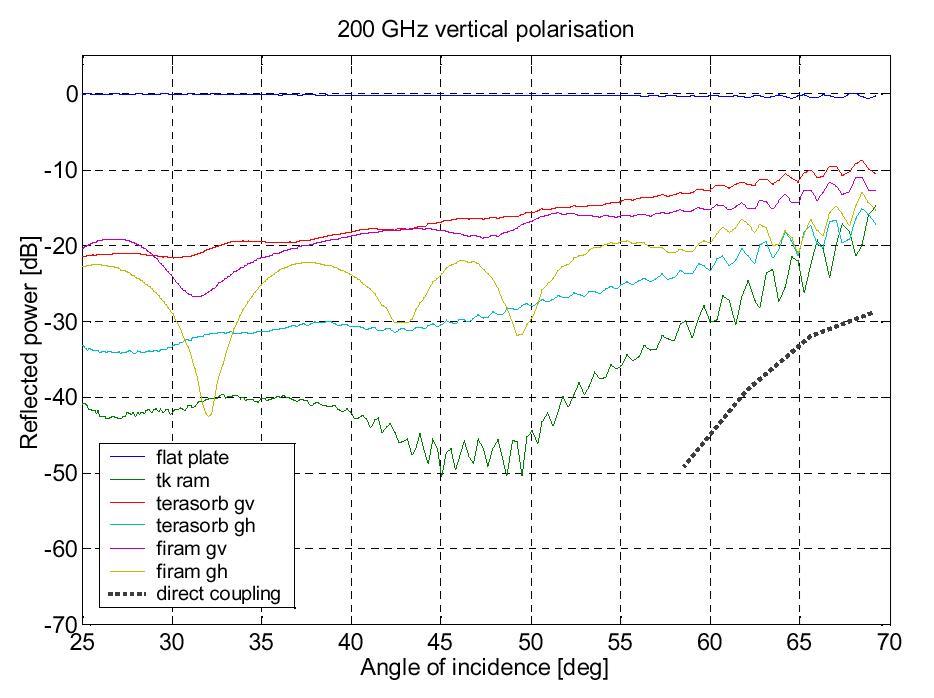
More details are give in their extensive paper ![]() on Scattering from RAM.
on Scattering from RAM.
Here is one performed by
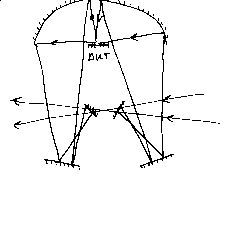
The measurement below shows how good an absorber it is in the THZ and FIR/Mid IR regions.
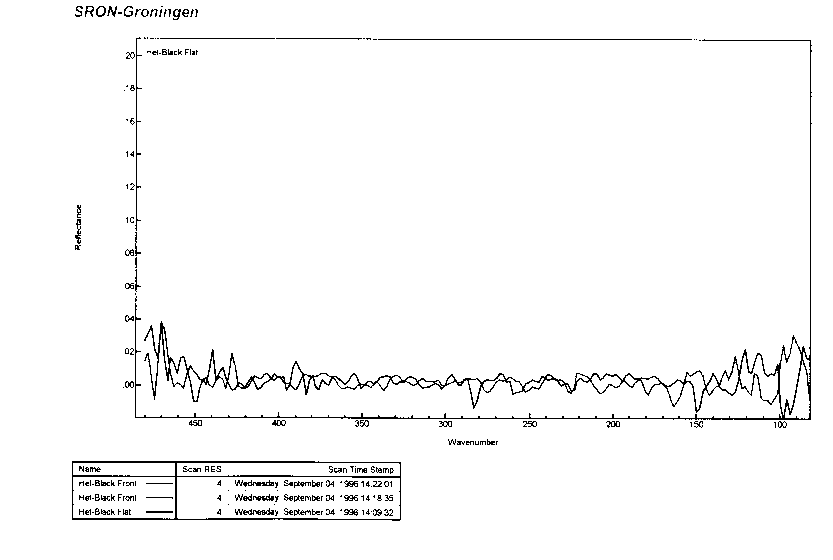
Here is one performed by Bob Giles at the Lowel Resarch Foundation. He was measuring specular reflection directly back into the source, as a function of incident angle on a small sheet of the material. The Bragg diffraction peaks (the material is really an absorber coupled with a 2D diffraction grating) are visible, but - even at their peak, are at the -58 dB level. X-polar level was measured to be -73dB.
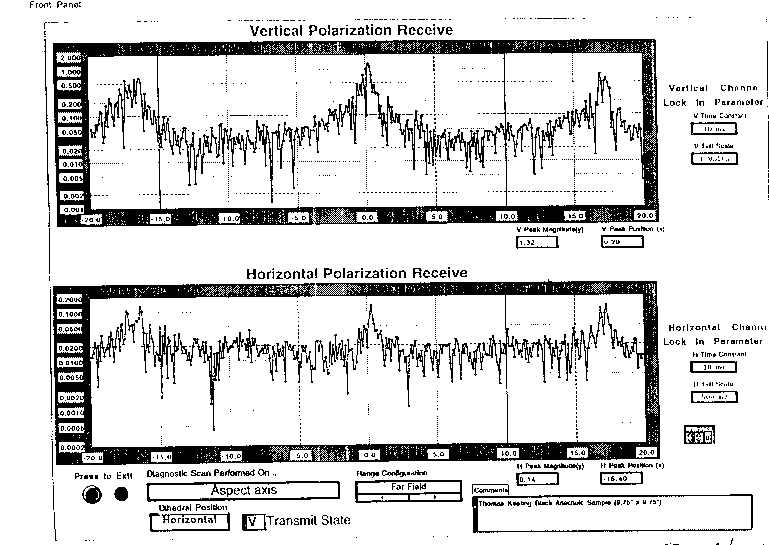
Some of the best measurements we have come from Dr. Philippe Goy at AB Millimetre in Paris: specular reflectivity at +/- 15 degrees is always less than -30 dB at 475GHz and 570 GHz. Below you will see phase plots showing reflectivity below 55 dB at a particular angle, showing how low specular reflectivity can drop..
Specular reflection +/- 15 degrees measured at 475 GHz
Specular reflection +/- 15 degrees measured at 570 GHz
Here are recent normal incidence measurements, also performed at AB in Paris at 672 and 576 GHz. the plots show an Alumimium plate defining the zero dB line. At 672 GHz the noise floor is starting to cause problems, but reflectivity is lower than -35dB. At 576 GHz, the noise floor is much less of a problem, and reflectivity is always below 40dB.
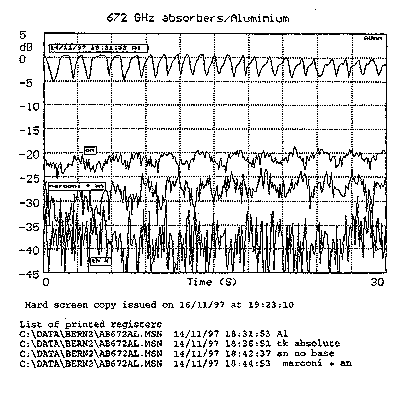
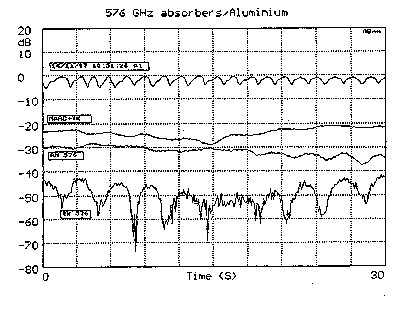
For more details or some samples contact
Large Tiles
The individual pieces look like:
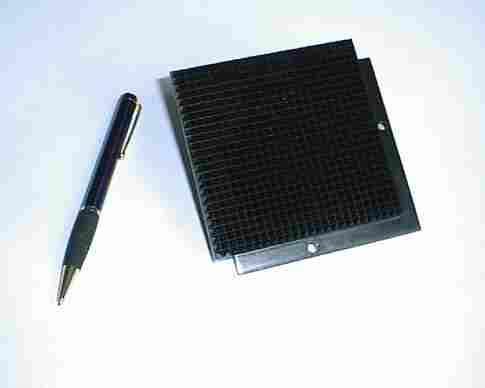
Axel Murk at the IAP has kind provovided the following normal incidence S11 reflection measurements on the RAM.
The Bands correspond to MetOP-SG MWS radiometer bands
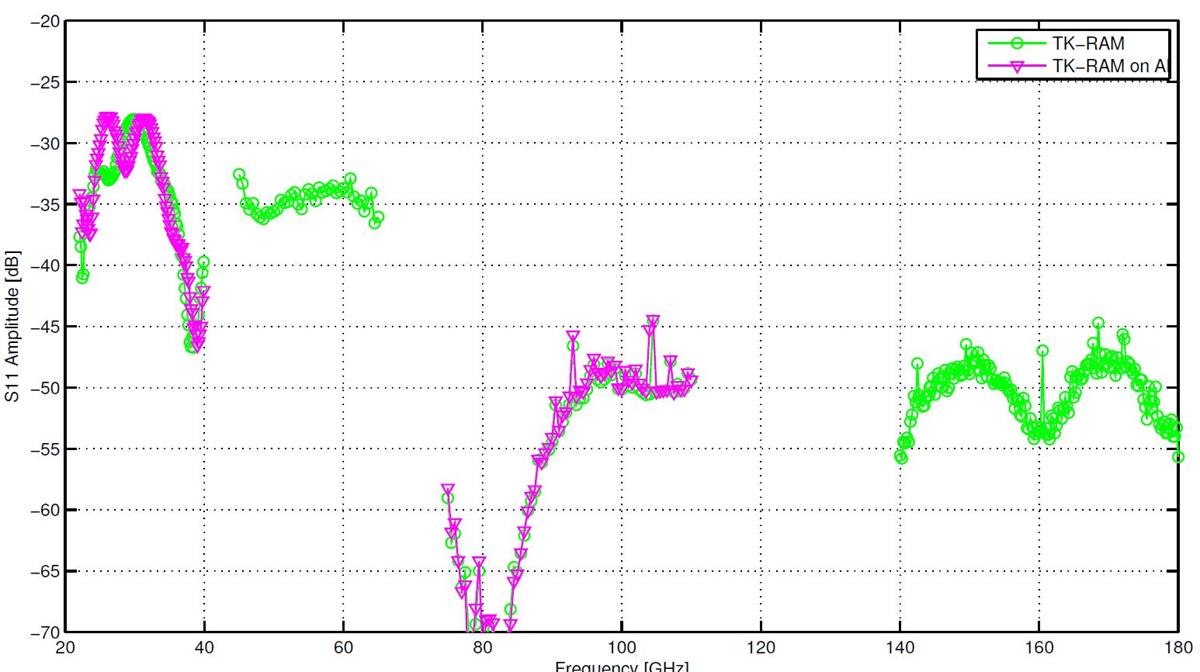
The measurement below shows how good an absorber it is in the mm region. These normal incidence monostatic measurements were kindly made at NPL by David Gentle:
The RAM was measured with a HP8510 with respect to a large aluminum plate in a monostatic configuration. The standing wave for the reference metal plate measurements was averaged out by making a series of 11 measurements at 0.2mm intervals. The RAM was also measured at 11 positions separated by 0.2mm intervals.
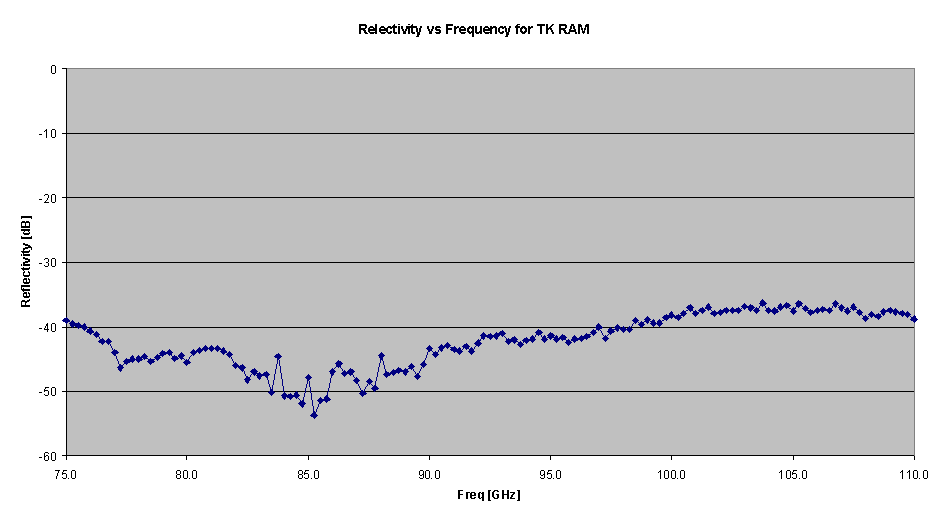
Similar monostatic measurements were made in St Andrews, which show the benefit of slightly (10 degrees) tilting the RAM:
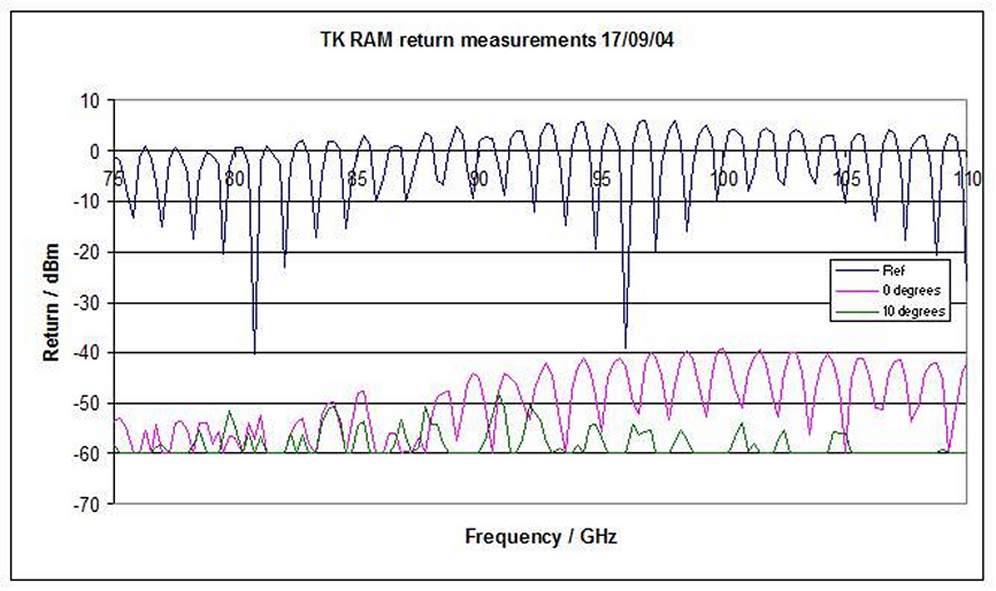
Thye RAM - given the height of the pyramids - obviously has a lower frequency limit, which is illustrated in this measurement. There is intimation here that performance will be good at frequencies not much higher than 22 GHz.
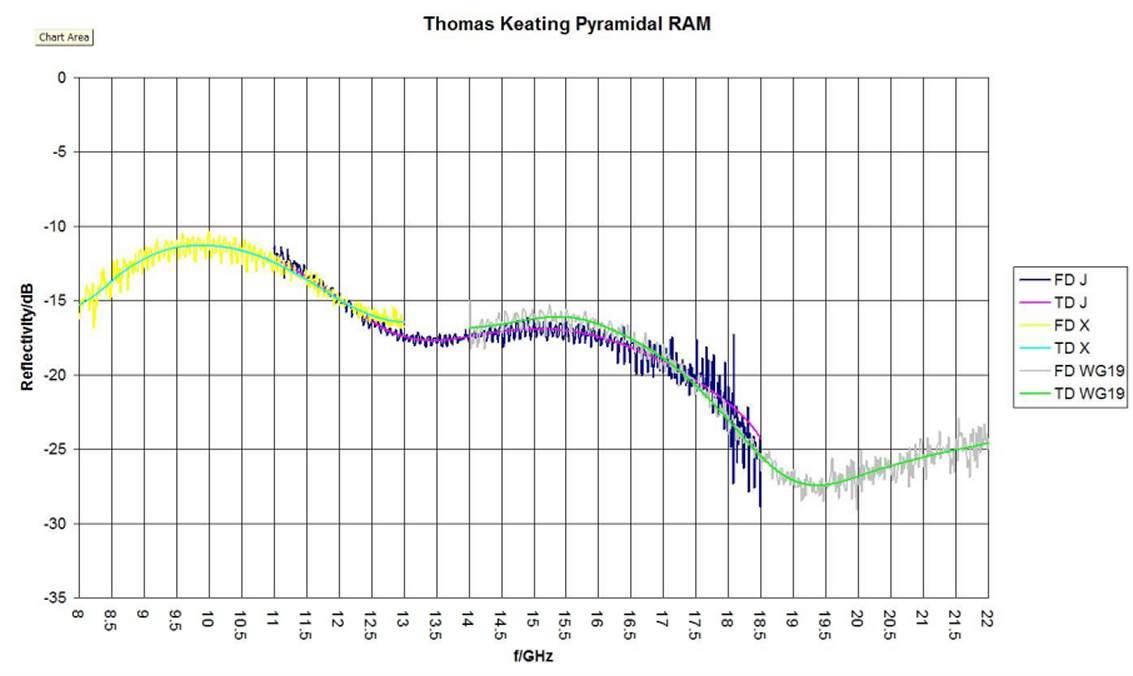
ESA, as part of the MetOP-SG MWS radiometer has measure performance over a range of angles from 23 GHz upwards, and has kindly allow us to provide their results (Measured on TK designed and made antenn range hardware) in this pdf here. It confirms useful, if not spectacular performance from 18 GHz upwards.
Richard Wylde - Thomas Keating Ltd -